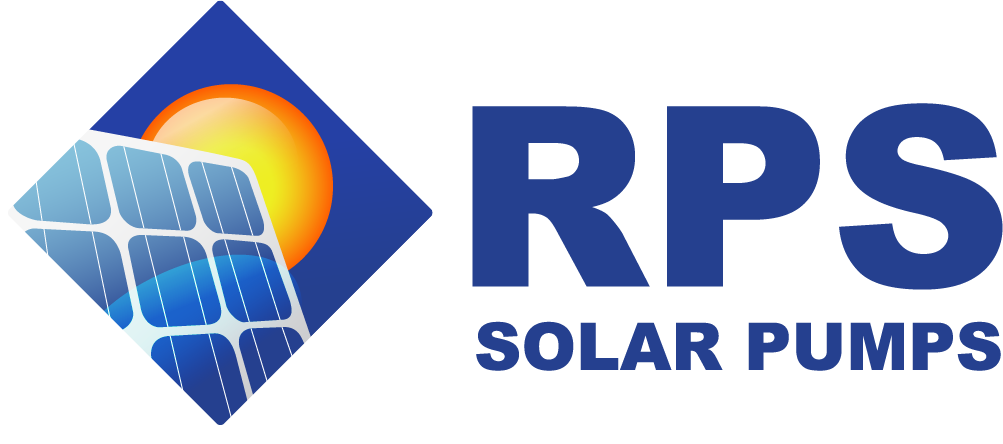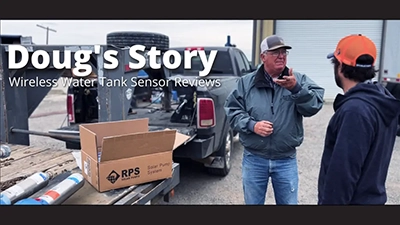Wiring for a solar well pump
Part 4 of our installation series shows how sensors and solar panels attach to your RPS controller. We’ll guide you through connecting all the wires, then demonstrate the kit’s functionality including tank-full and well-low sensors.
00:00 – Tank Full Sensor
00:21 – Connecting Solar Panels
01:15 – Controller Wiring
01:41 – pump wire
03:35 – low-well sensor
04:30 – tank-full sensor
05:20 – System Demonstration
we’ll use one of our sensors as our tank full sensor you place this in the top of either your stock tank or your storage tank and as the water rises with the pump pumping and it touches this sensor it’s gonna send a signal back to your controller it’s going to tell your controller to shut off and turn off the pump so you don’t overflow your tank all of our systems come with high quality 100 watt mono crystalline solar panels we use 100 watt panels because it makes it much easier to ship and much easier for one person to set up we look on the back side of the panels there are four mounting holes on each of the sides this makes it very easy to connect up to your solar panel mounting frame mc4 connectors come off the back of the panel’s and if you look in your user manual that tell you how to hook up your panels in parallel and series to get the proper connections take our controller wire and simply plug it into our solar fans
they’re polarized so you don’t have to worry about hooking them up backwards connections of your solar panels are that easy the MC 4s have built-in gaskets in order to provide a waterproof connection for the outdoor environment
we have our pump wire spliced we our sensors hooked up in our tank and we have other sensor attached to the top of our pump where were solar panels hooked up to our controller and now we’re ready to make the final connections into the controller and get this system operating
we’re going to make our final connections to the controller and first we’re going to assert the pump wire in through the grommet at the bottom and hook it right up to the screw terminals
with the thicker wire it can be a little difficult getting it all router and cooked in so take your time form the wires to the right connections and tying them up one at a time here
we have the black wire and the wire label with one hooked up to the one slot
the blue wire the one we label – hooked up to the second slot and the third wire the red wire hooked up to our number three slot tighten these down pretty snug don’t want to over tighten and break them off of the circuit board but we also want to make sure they’re not coming loose that feels pretty good on there then we can tighten up this waterproof gland
and it’ll grab right under that wire holding it in place next we have our low well sensor will feed this up through the bottom grommet we have both a red and a black wire so we really don’t matter which one you hook up to which but I do like to hook up the black to common it’s kind of acting like a ground
and the red one up – wh-wh stands for well hi check these connections both of them in there good tighten down the grommet so we don’t accidentally pull out those wires and a tank full sensor this one’s optional if you’re not using a setup where you’re worried about your tank overflowing you don’t have to hook this up and the system will operate just fine
look up the black wire too common
and the red one to th that stands for tank hi
that’s simple we have our three sets of connections we have our pump wire we have our low well sensor and they were a tankful sensor with the connection of seven wires it completes our system and now it’s ready to start pumping water
alright so we brought all of our equipment outside and we’re ready to test the system we have our low-wealth sensor inside the tank we have our pump in the tank and for now we have our tank full sensor sitting outside of the tank and we’ll show you how that works in a couple of minutes we set our panels up on our two panel adjustable tilt mount solar mount this is an optional accessory with your kit and it’ll make the installation go much easier plus is adjustable throughout the year so you can change the angle of the solar panels for an appropriate season so with everything hooked up we’ll simply flip the bottom switch on the controller all the lights will flash our pump light will come on in just a second
okay so we can hear the pump starting to operate and what it has is a soft start and so over six seconds it’s gonna come up to speed and start pumping all the water there you go so it’s about reached maximum speed yes and we’re getting anywhere from six to eight gallons a minute but we’re pumping out of a tank with no head so real quick I’m going to demonstrate the well low so if your well happens to run low and the sensor comes out of the water the pump is starting to slow down and there we go it’s shutting the pump down and it’s protecting your pump and your motor from running dry this is great for low producing wells it means you’re not going to burn up your pump okay we’ll stick that back in the water and you can see that well low light turns off and the pump will start back up pump light comes on and I can hear the pump starting to operate again
great ramp back up to full speed now we’ll take our tank full sensor in case you’re pumping into a stock tank or anything else and you don’t want it to overflow if we dip this down in the water you’ll see our tank full light comes on and again the pump stops this is great for livestock tanks storage tanks anywhere you put in the water this is the complete system you’re getting the motor the controller the solar panels we have the optional tilt mount it’s very easy to set up as you’ve seen and we’re here ready to help if you have any questions during your setup so give us a call today or visit us at our website RPS solar pumps calm
Are you looking for a solar pump?
RPS is a family-owned company of laser-focused mechanical, electrical and software engineers that live and breathe solar pumping almost every hour of every day. We have sales offices in a number of states now, but our main shop has moved to an Ag town in California (we do get poked fun of for this!) and our warehouse to move there shortly. We put great time, money and thought into our kits – including parts and components to make installation a breeze. Our reading materials, manuals, videos and diagrams allow customers of all skill levels to install a solar pump successfully the first time. As has become famous, we also offer a direct line to talk with real humans! ..our actual pump engineers for asking questions, helping troubleshoot, or planning for installation.


